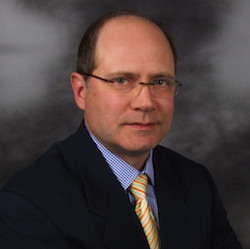As markets become increasingly electronic, buy-side traders are faced with a bewildering number of choices in terms of execution venue, speed of execution and price.
Trying to come up with the right balance can dictate the difference between success and failure of an investment strategy.
 Michael Earlywine, head trader, Americas at Ecofin
Michael Earlywine, head trader, Americas at Ecofin
“Regarding TCA [transaction cost analysis], we look for trends that help us use our brokers more effectively,” said Michael Earlywine, head trader, Americas at Ecofin. “We have found that they tend to form into two distinct groups—overly aggressive and way too passive. Depending on the situation we often try to use these traits to our advantage when assigning trades.”
Ecofin, a $1.2 billion investment management firm headquartered in London, specializes in public and private investments into the worldwide utility, infrastructure, energy and alternative energy sectors. Its funds include hedge funds, long-only funds, private equity and debt funds, and bespoke institutional mandates.
Although the firm doesn’t engage in high-speed algorithmic trading, it does trade instruments that are part of other firms’ high-speed trading strategies, which means it needs to understand the inner workings of automated trading.
“The bulk of our commission dollars go for research, spread across a wide gamut of trading desks that vary from excellent to very poor,” Earlywine said. “One of the ways I protect Ecofin from sub-optimal execution is by directing traders to use their own algos. We talk about which one they are using, its strength and weakness, and then discuss options over the life of the trade. Effectively, I manage the sale trader and let them handle the peculiarities of the algos that we choose.”
A proliferation of dark pools and other alternative trading systems has led to a fragmentation of markets, which helps to keep spreads tight by ensuring an ample supply of liquidity across many asset classes, notably equities but also fixed income and foreign exchange.
Fidelity Capital Markets, the institutional trading division of Fidelity Investments, late last year launched Block Liquidity Opportunity Cross, which goes by the acronym Blox, a new execution venue focusing on block trades, which was an extension of the company’s alternative trading system (ATS), CrossStream.
“We launched the ATS in 2006, followed by smart order routing and algorithmic trading,” said Derrick Chan, vice-president of financial engineering and electronic trading at Fidelity. “Our goal was to bring together the unique liquidity that we have, including both retail and institutional order flow.”
Blox, the institutional segment of CrossStream ATS, offers a safe venue to interact with a robust source of retail and channel order flow.
The venue offers institutional investors the ability to interact with orders from Fidelity’s retail brokerage business—34% of the shares coming from its retail brokerage business are considered block size.
This allows Fidelity’s institutional clients to leverage the liquidity of Fidelity’s retail brokerage business, which trades approximately 535 million shares on average per day, as well as other firms whose order flow is handled by Fidelity.
“One of the main reasons we launched Blox is that liquidity is being repackaged into multiple dark pools and order types, so the question becomes one of deciding which combination of order type is appropriate for each dark pool,” said Chan. “It’s become more and more an issue of managing information leakage as your orders get split up and sent out across multiple venues.”
Electronic Order Books
In the Nasdaq market, three electronic order books (EOBs) control around 82% of the market, while the share of market-makers has declined to 17%, according to research firm Celent.
In a 2012 report, Celent analyzed over 12 billion orders over the period of July 1, 2012 to September 30, 2012, then measured and ranked 155 market participants according to their execution speed and prices obtained for incoming orders.
Bats Exchange, NYSE Arca, and BAts Y-Exchange are the leading Nasdaq venues, followed by other market centers including EDGA Exchange, Nasdaq BX and Nasdaq PSX.
The major EOBs in terms of price improvement are Nasdaq BX, Bats Exchange and BAts Y-Exchange, according to Celent. For average speed of execution, the leading EOBs are NYFIX Millennium, Bats Exchange, and Bats Y-Exchange. Across the two best execution parameters, the leading firms are the Bats Exchange and Bats Y-Exchange.
Comparing the market-makers for price improvement, Instinet, Barclays Capital and Knight Capital were found to be the best, according to Celent. Similarly, Wells Fargo Securities, Credit Suisse and BofA Merrill Lynch were the best performers when comparing average execution speeds.
“The move away from the lit market has, in many ways, been negatively connoted and vilified,” said Travis Felker vice-president of research and development at Cyborg Trading Systems, a trading systems provider. “I believe this to be unfair and a bit of scapegoat. The facts are that dark pools are very competitive; they reward the initiated and the innovative, and decrease the cost of trading for nearly everyone. The U.S. equity landscape is ever changing, but is constant in that those who can adapt tend to thrive.”














